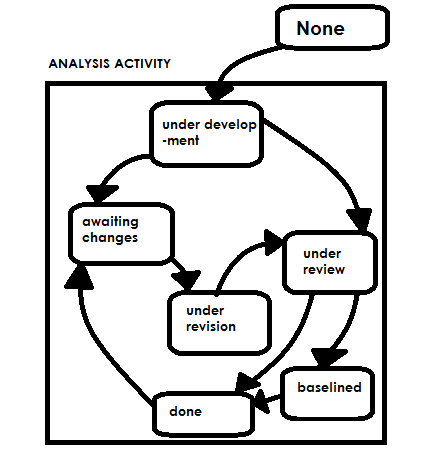If we take waterfall model as an example, you will not know the activities going on in each phase, only after the phase is over, you get a work product or a document.
Suppose we want to know the state of activities of the design phase and at the same time we want to know about testing phase activities. Which ones are complete and which are not?
The concurrent process model shows the current state of activities, tasks and their associated states that remain in different phases.

For example,
‘Design Phase’ may be at an ‘awaiting state’ and ‘customer communication’ is in ‘under revision’ state. The customer wants some changes to the design, then ‘communication’ goes to ‘awaiting changes’ and ‘design’ goes to the under-development stage again.
The benefit of this model is that project managers know each phase is what state and why.
Main Point – Maintain information about each phase at the activity level.